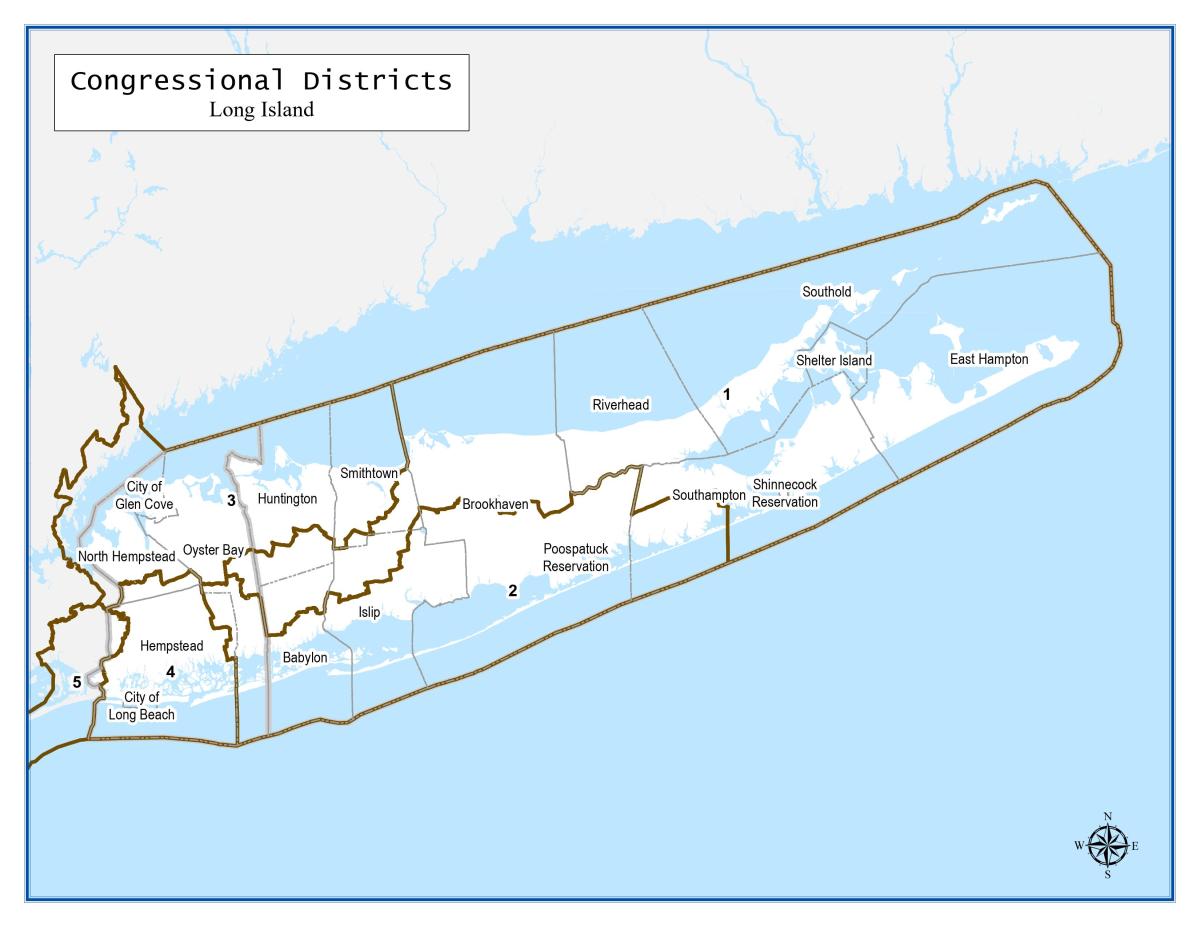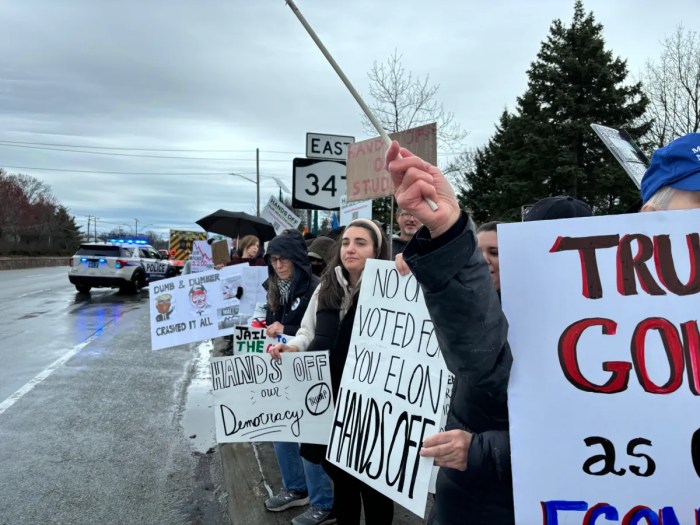Debates over the fundamental fairness of redrawing legislative lines are heating up on Long Island as lawmakers in Nassau and Suffolk counties dive into the local phase of the redistricting process.
Democratic New York State lawmakers recently approved new congressional, state Senate and state Assembly lines that Republican advocates are challenging in federal court, although an appeals court stayed a lower court ruling that the state needs to redraw the lines. Now the GOP-controlled Nassau County Legislature is gearing up to redraw its district lines, although it is unlikely to get much pushback from Republican Nassau County Executive Bruce Blakeman. The Suffolk County Legislature, however, may have a bumpy road ahead as the GOP majority needs its lines to be approved by Democratic Suffolk County Executive Steve Bellone, who vetoed lines his own party’s members hurriedly passed Dec. 31 on their last day in control of the chamber following losses in the November elections.
“The only way to ensure reapportionment is done fairly is when it results from a public process that complies with the law,” said Presiding Officer Kevin McCaffrey (R-Lindenhurst), who backed legislation that “will breathe new life into the bipartisan reapportionment commission, resulting in a fairer process for Suffolk residents.”
Redistricting follows the decennial census count and uses that data to ensure voter representation is not diluted by population shifts. The lines are typically drawn by independent commissions intended to prevent partisan gerrymandering — diluting or packing of voters into certain districts to sway election results.
“New York State requires … that local governments follow new criteria enacted into law last year that makes it harder for single-party majorities to cut up small towns and villages for partisan benefit,” said Jeffrey M. Wice, a Long Beach resident and adjunct professor/senior fellow at New York Law School who is an expert on redistricting.
But state lawmakers redrew their district lines and congressional district maps themselves after the bipartisan Independent Redistricting Commission could not agree on a combined map, and punted responsibility. Gov. Kathy Hochul signed into law the maps devised by the state Legislature’s Democratic majority in February.
Nassau and Suffolk lawmakers are naming appointees to their respective redistricting commissions, with public hearings to follow. However, if the commissions don’t agree or the legislatures don’t approve of the maps the commissions create, it’s possible county lawmakers may follow Albany’s lead and draw their own lines.
The new congressional districts state lawmakers created on LI raised some eyebrows. For instance, the state’s 1st Congressional District, which currently covers the entire East End and part of the Town of Brookhaven, was redrawn to stretch through Suffolk into eastern Nassau. And the 2nd Congressional District, which currently covers the North Shores of Nassau, western Suffolk, and eastern Queens, was redrawn to include parts of the Bronx and Westchester.
It wasn’t just Republicans who balked. East Bronxites sent an open letter with a live petition attached to the governor and state lawmakers blasting the new lines.
“Frankly, we have about as much in common with someone in Smithtown, Long Island as we do with someone on the planet Mars,” the Bronx residents wrote in the letter. “We are taking a big step backward, and once again the Bronx is being shortchanged to benefit affluent Long Islanders. You are taking solidly lower- and middle-income neighborhoods of the Bronx that are in need of equitable funding and throwing them together with some of the wealthier areas of the state. We don’t go to the same schools, take the same transportation, have the same municipalities or services, nor do we share the same problems or interests.”
Election lawyers watching the process play out on LI issued a warning to county lawmakers. Among those paying close attention is Randolph M. McLaughlin, a professor at Haub Law School at Pace University and co-chair of the civil rights practice group at the New York City-based law firm of Newman Ferrara. He was part of the lawsuit that resulted in the Town of Hempstead using council districts in order to give minorities a seat on the town board.
“I’m concerned about the Nassau County Legislature deciding who the voters are rather than the voters deciding who their lawmakers should be,” he said. “We will have our eyes on the predominantly minority sections of Nassau and Suffolk … We’re watching to make sure violence isn’t done to their districts, that they’re not cut up into other districts, that their lines are properly drawn, and those communities are not disenfranchised.”
Sign up for Long Island Press’ email newsletters here. Sign up for home delivery of Long Island Press here. Sign up for discounts by becoming a Long Island Press community partner here.

































